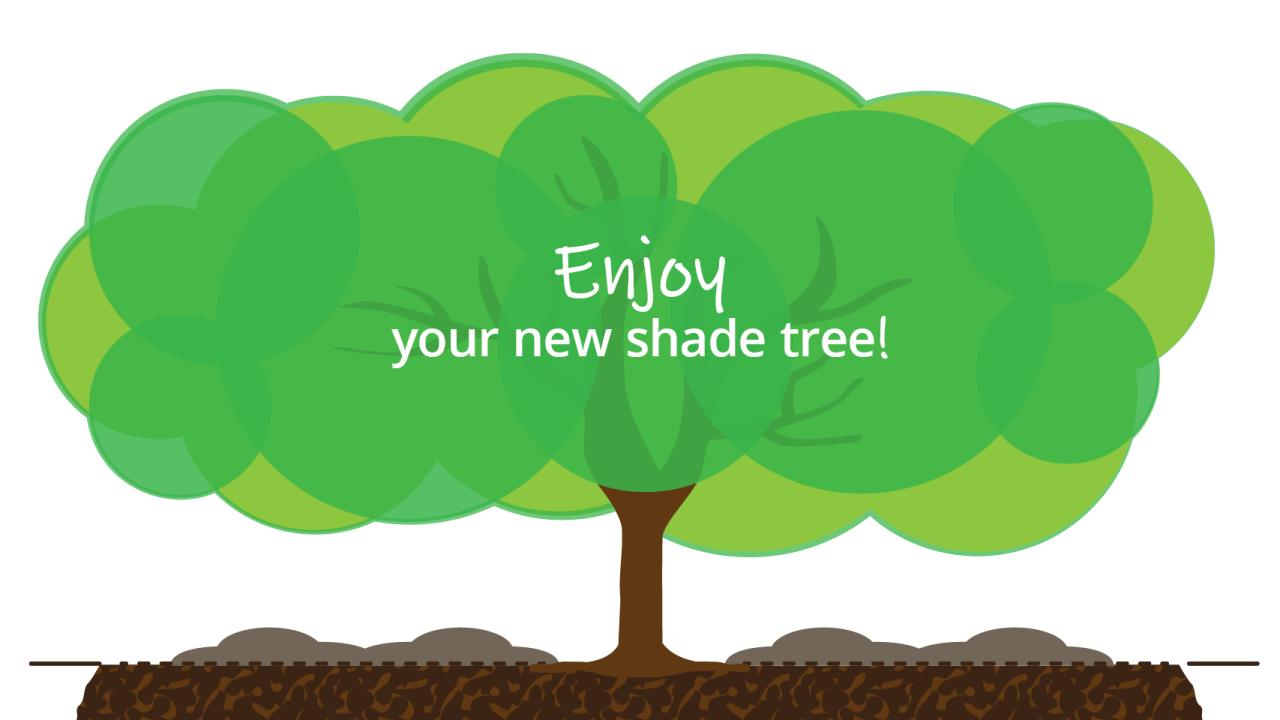Techniques for Planting and Staking to Ensure Optimum Health
Many different and beautiful plants can be grown successfully in Arizona. When planted in the right place and cared for properly, trees help increase property value, provide shade and conserve energy. Help your shade trees thrive by following these simple tips.
-

Year-round planting in the desert is possible. The ideal planting time is from September to November. This allows time for the roots to grow throughout the cooler months, allowing the tree to establish a foundation before the summer heat.

-

To prepare for planting your tree, till or loosen soil 4-5 times the diameter and no deeper than the root ball. Then remove soil in the center to create a hole twice as wide but only as deep as the rootball. This prevents sinking and burying the trunk.

-

Once you've prepared the ground, gently slide the rootball out of the container and place into the planting hole. In doing so, handle the tree by the rootball, not the trunk. The top of the rootball should be level with or slightly above the existing soil surface.

-

Next backfill with native soil; no amendments or fertilizer are necessary. Be sure to water the area thoroughly and apply a 2-4” layer of organic mulch on top of the soil – keeping away from the trunk. This slows evaporation and keeps the soil cooler.

-

If the tree cannot support itself, use two stakes placed outside the rootball, and carefully attach ties so the trunk can move around slightly within the ties.

-

Allow small branches to remain on the trunk for the first year to provide shade and nourishment for the tree.

-

Enjoy

-

Year-round planting in the desert is possible. The ideal planting time is from September to November. This allows time for the roots to grow throughout the cooler months, allowing the tree to establish a foundation before the summer heat.

-

To prepare for planting your tree, till or loosen soil 4-5 times the diameter and no deeper than the root ball. Then remove soil in the center to create a hole twice as wide but only as deep as the rootball. This prevents sinking and burying the trunk.

-

Once you've prepared the ground, gently slide the rootball out of the container and place into the planting hole. In doing so, handle the tree by the rootball, not the trunk. The top of the rootball should be level with or slightly above the existing soil surface.

-

Next backfill with native soil; no amendments or fertilizer are necessary. Be sure to water the area thoroughly and apply a 2-4” layer of organic mulch on top of the soil – keeping away from the trunk. This slows evaporation and keeps the soil cooler.

-

If the tree cannot support itself, use two stakes placed outside the rootball, and carefully attach ties so the trunk can move around slightly within the ties.

-

Allow small branches to remain on the trunk for the first year to provide shade and nourishment for the tree.

-

Enjoy




